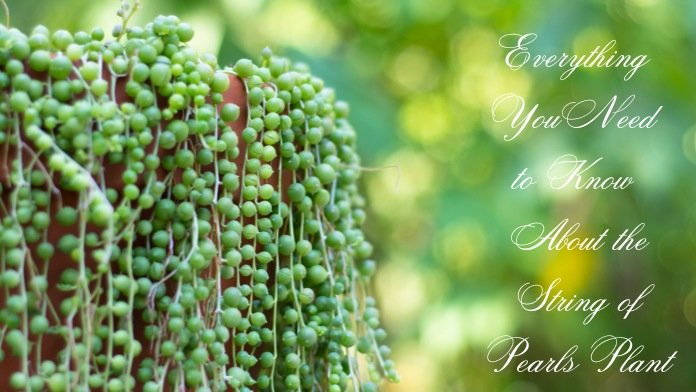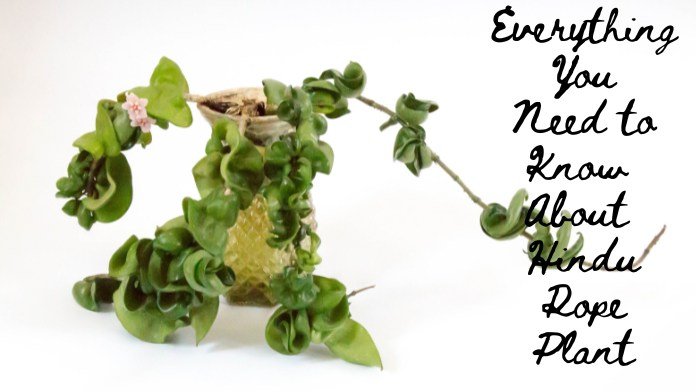Everything You Need to Know About the String of Pearls Plant
July 4, 2024 | by Noor Nahar Tarin

The string of pearl plant, scientifically known as Senecio roleanus, is a unique and attractive succulent. Its distinctive appearance, resembling a green pearl waterfall, makes it a popular choice for indoor garden enthusiasts. Caring for your string of pearls can seem daunting at first (there are so many strands to monitor!), but with a few simple tricks and a watering schedule, this plant can work just as well as other low-maintenance options. For the best care tips and tricks, we asked The Seal’s plant expert, Paris Lalicata, to provide expert guidance. Please continue reading for advice on caring for strings of pearl plants that will help keep them thriving.
About String of Pearls Plant
The String of Pearls plant is native to the arid regions of southwestern Africa. Its drooping stems, decorated with rounded leaves, give it an attractive appearance that stands out in any house plant collection.
Common names are pearl necklace, bead necklace, pea necklace, and rosary vine.
- Botanical name Curio roleianus (formerly Senecio roleianus)
- Family Asteraceae
- Mature size is 1-2 feet tall and tall.
- Sun exposure total, partial
- Soil type sandy, well-drained
- Soil pH is neutral acidic.
- Summer flowering time
- The flower colour is white.
- Hardiness Zones 9-12 (USDA)
- Native area Africa
- Toxicity Toxic to humans and pets.
Ideal Growing Conditions
To thrive, the String of Pearls plant needs specific growing conditions that mimic its natural habitat:
Light
Pearl necklace plants prefer bright, indirect light. Although it can tolerate some direct sunlight, too much can burn its delicate leaves. Placing the plant near a south-facing window with filtered light or in a spot with bright, indirect sunlight will provide optimal growing conditions.
Temperature
This succulent thrives in temperatures between 70°F and 80°F (21°C —27°C) during the day and slightly cooler temperatures at night. Since it does not tolerate frost, it is important to protect the plant from frost.
Soil
A well-drained soil mix is essential for pearl necklace plants. A potting mix works well for cacti or succulents, or you can make your own by combining regular potting soil with sand or perlite to improve drainage.
Watering
Proper watering is one of the most important aspects of pearl necklace plant care. The plant stores water in its leaves, making it susceptible to overwatering. Allow the soil to dry completely between waterings, and then water thoroughly.
Watering once every two weeks is usually sufficient during the growing season (spring and summer). During the dormant period (fall and winter), reduce watering to once a month.
Humidity
Pearl necklace plants do not require a lot of moisture and do well at average indoor humidity levels. However, occasional misting can help maintain its health if the air is too dry.
Transplant
String pearls are very delicate plants with shallow root systems. This means there is no need to report this succulent every year as long as you can see it is still growing well in its current container. But as soon as you find that your pearl necklace has grown too big for its pot, isn’t growing as well as it used to, or you notice that the plant’s roots are uprooted, it’s time to transplant it into a larger pot (about both the diameter and the height of the plant 10% larger in case).
Again, strings of pearls are delicate, so each time you transplant, you should handle them with care, make sure the soil is dry, and do so early in the spring growing season. String of pearls are best transplanted early in the growing season.
step by step
Step 3: If you’re growing your pearl necklace in a hanging basket, it’s best to remove the hanging clips and hooks first so they won’t get in the way when you replace the plant and minimize bead damage.
Step 4: Gently place one hand over the plant and turn the pot so the plant slides off. To help loosen the soil, press gently on the bottom of the pot, and you can try to open it. This way, you can remove your pearl necklace from the jar without damaging its fragile beads.
Step 5: Prepare your cactus or succulent soil mix. You can add perlite or coarse sand for better drainage. Pack tightly around your new pot, leaving room in the centre for your string of pearls to pass through.
Step 6: Carefully place your pearl necklace in the pot, then put some soil around the plant, making sure to fill any open spaces.
Care and Maintenance
- The pearl necklace plant is fine with its conditions and will grow vigorously in one season. These are the main care requirements:
- Plant in a succulent or cactus potting mix.
- Place it where it will receive direct sunlight in the morning and indirect light in the afternoon.
- Adequate water to keep the soil moist throughout the growing season. Reduce watering during the winter months.
- Avoid rooms with temperatures below 50 degrees and high humidity.
- Feed regularly during the spring and summer months.
Pruning
Regular pruning helps maintain the plant’s shape and encourages fuller growth. Trim off long or dead stems with clean, sharp scissors or shears. Pruning can also prevent the plant from becoming too heavy and breaking branches.
Feeding
Fertilize the pearl necklace plant during the growing season with a balanced, water-soluble fertilizer mixed in half. Usually, feeding it once every six weeks is sufficient. Avoid fertilizing during the dormant period.
Pest Control
Although the String of Pearls plant is relatively resistant to pests, it can occasionally attract mealybugs, aphids, and spider mites. Inspect the plant periodically for signs of pests such as sticky residue, webbing, or small insects. Treat the plant with insecticidal soap or neem oil if an infestation occurs.
Propagation Methods
String pearls are easy to propagate because they have shallow roots and grow new roots easily. The easiest way is to use cuttings. All you need to start propagation is a healthy cutting 3 to 4 inches long; just place the cutting in the soil and press lightly; roots will slowly grow from the cutting. Another way is to remove some leaves from the cutting and then place the stem in the soil so that the soil covers the growth nodes (where the leaves grow).
Then, the roots will grow. From this root cutting, mist the soil lightly to keep it moist until the new plant establishes itself and begins to grow.
Propagating a string of pearl plants is relatively easy and can be done using several methods:
Stem Cuttings
The most common method of propagation is stem cuttings. Select a healthy stem and cut a 4- to 6-inch section with a few leaves. Allow the cut to dry for a day or two to form a callus on the cut edge. Plant the cuttings in a well-drained soil mix and water sparingly until new growth appears.
Layering
Layering is another effective propagation method. Take a long stem and bury a section in the ground while it is still attached to the mother plant. Over time, the buried part will develop roots. Once the roots are formed, cut the new plant from the parent and pot it separately.
Leaf cuttings
Although less common, propagation by leaf cuttings is also possible. Carefully remove the individual leaves from the stem and place them in a well-drained potting mix. Mist the leaves lightly and moisten the soil until new growth occurs.
Common Problems and Solutions
Sometimes, growing a string of pearls can be difficult. In other words, these attractive succulents can die if not cared for properly. However, if you spot any common problems in your puppy and immediately act, they will be healthy and happy.
Despite being relatively easy to care for, pearl necklace plants can face several problems:
Overwatering
One of the most common problems is overwatering, which can lead to root rot. Ensure the soil dries out completely between waterings, and use a pot with drainage holes.
Little Water
On the other hand, too little water can cause pearls to dry out and the plant to lose its vibrant green colour. If this happens, increase the watering frequency, ensuring the soil is thoroughly moist but not soggy.
Lack of light
Inadequate light can prevent plant stems from becoming long and sparse. Move the plant to a bright spot with indirect sunlight to encourage more compact growth.
Pest Infestation
Periodically inspect the tree for pests and treat any infestations immediately. Isolate-affected plants to prevent the spread of the pest to other houseplants.
Dry leaves and stems on your string of pearls are a clear sign that your pearls are not getting enough water and sunlight. Some common causes of succulent leaf curling are waterlogging, overwatering, or insufficient sunlight.
Root Rot
Regular garden soil mix can cause root rot because the medium is too heavy and has a high water-holding capacity. Additionally, porous, well-drained soil prevents root rot in succulents.
Pearl Necklace Plant Growth Benefits
The pearl necklace plant offers several benefits beyond its ornamental value:
Aesthetic appeal: The unique look of plants adds a touch of elegance and intrigue to any interior space. Its trailing stems can be used in hanging baskets, as centrepieces or to accent shelves and window sills.
Air Purification: Like many house plants, the String of Pearls plant helps improve indoor air quality by removing toxins and releasing oxygen.
Low maintenance: The String of Pearls plant requires minimal care and is ideal for busy people or those new to gardening.
Therapeutic effects: Growing plants in the garden and tending to them has been shown to reduce stress and increase mental well-being. With its delicate and calming appearance, the pearl necklace plant can help create a calming environment.
Types of String of Pearls Plant
Several plants closely related to String of Pearls have differently shaped leaves, looking more like bananas, teardrops, or striped watermelons. These close cousins in the same daisy family include:
Curio Radicals: Full and not trailing like a string of pearls, this variety has tendrils with banana-shaped leaves. It is commonly called strings of bananas or strings of hooks.
Curio Hermanus: Commonly called watermelon string or string of beads, this trailing plant has small watermelon-shaped leaves with purple stripes.
Citriformus: This variety has erect, drooping stems, thick, teardrop-shaped leaves, and small white flowers that bloom between late summer and winter.
Should You Grow Pearl Necklaces Indoors or Outdoors?
String bead is a delicate hanging succulent that thrives in a warm, dry environment. It’s very easy to care for as a houseplant, but it’s also ideal to grow outside, especially if you’re in zone 9 and warmer. However, in other regions where temperatures drop below 30 degrees Fahrenheit, developing a string of pearls in a container that can be easily brought indoors for protection is best.
A string of pearls should be placed outdoors in a partially shaded location. This will protect them from the afternoon sun while allowing them to enjoy the bright, indirect light of the morning sun.
Are Pearl Necklaces Poisonous?
Although a string of pearls is a beautiful plant, its sap is toxic to humans and pets. In humans, accidental ingestion of any part of the plant can cause rash, itching, pain, inflammation, dermatitis, severe skin irritation, and moderate gastrointestinal symptoms such as nausea and vomiting.
Eating plant parts can be devastating for animals, as it can cause lethargy, itching, and painful skin, causing discomfort in pets.
Conclusion
The pearl necklace plant is an impressive, low-maintenance succulent that can enhance the beauty of any indoor space. By paying attention to proper growing conditions, adequate care, and common problems, you will be able to enjoy the unique charm of this plant for years to come. Whether an experienced gardener or a beginner, the String of Pearls plant is a delightful addition to your plant collection, offering aesthetic appeal and numerous benefits.
RELATED POSTS
View all


